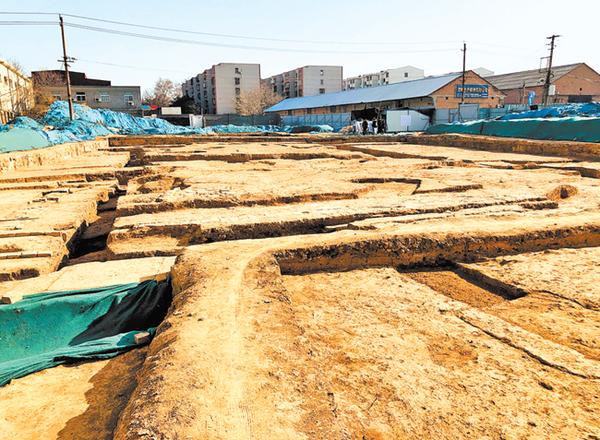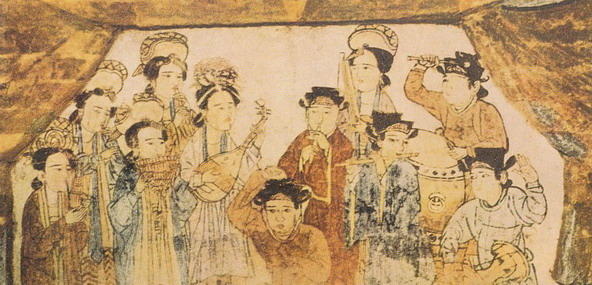Henan province has 14 items listed among the recent-concluded selection of "China's 100 Major Archaeological Discoveries in Last 100 Years", ranking 1st nationwide.
During the 11th Party Congress of Henan Province, we are launching the Archaeological Discovery in Henan: A Marvel in the World series featuring 7 bilingual stories about Henan's 14 items in "China's 100 Major Archaeological Discoveries in Last 100 Years" to demonstrate Henan's long history and rich culture.
Here is the last episode: The Capital Site of China's Sui-Tang Period in Luoyang & The Tombs of the Song Dynasty in Xuchang.
Click on the video above
The Capital Site of China's Sui-Tang Period in Luoyang
The Capital Site of China's Sui-Tang Period is located in Chanhehuizu district of Luoyang city, Henan province, once serving as the capital of the Sui and Tang dynasties.
The Xuanwu Gate remains in Luoyang. [Photo by Guo Ge/Henan Daily]
Dating back to more than 1,400 years ago, the Capital Site of China's Sui-Tang Period in Luoyang lies on both sides of the Luohe River and covers an area of about 47 square kilometers, with Tangsimen village of Baimasi town to its northeast, Chengjiao village of Lilou town to its southeast, Miaowan village of Mangshan town to its northwest and the intersection of Wangcheng Avenue and Gucheng Road to its southwest.
The capital was first built in 605 AD or the first year of Daye of Emperor Yangdi of the Sui Dynasty. In 657 AD or the second year of Xianqing of Emperor Gaozong of the Tang Dynasty, Luoyang was also the capital, widely known as Dongdu. In 684 AD or the first year of Guangzhai of Emperor Ruizong of the Tang Dynasty, Dongdu was renamed as Shendu. In 690 AD or the first year of Wuzhou Period (established by Wu Zetian), Dongdu was renamed as Luoyang, while in 761 AD or the first year of Emperor Suzong of the Tang Dynasty, "Luoyang" was replaced by "Dongdu" again. In the late Tang Dynasty, the capital was destroyed in the war. The site remains today.
The site was listed among Henan's major historical and cultural sites protected at the provincial level in 1963, while among China's major historical and cultural sites protected at the national level in 1988.
The Tombs of the Song Dynasty in Xuchang
Located in Baisha village of Xuchang city, Henan province, a total of 3 tombs were built for Zhao Daweng and his family in the late Northern Song Dynasty. The No. 1 tomb in which Zhao Daweng is buried has 2 rooms respectively at its front and rear, while the No. 2 and No. 3 tombs have 1 room. The No. 1 tomb, a brick-chambered tomb with imitation wood structure, has a 7.26-meter-long passage connecting the square-shaped front room and the hexagon-shaped rear room, to the north of which the No. 2 and No. 3 hexagon-shaped tombs are located. All these 3 tombs are brick-chambered tombs with imitation wood structures.
A mural from the tombs. [Photo/Henan Museum]
Among all the brick-chambered tombs with imitation wood structures popular in China's central and northern regions in the late Northern Song Dynasty discovered so far, they are the best-preserved and most complex ones, providing important data for the study of such tombs at that time. (Source: dahe.cn Translator: Zhao Hanqing Video & Poster: Wang Junyi Proofreader: Chen Xingjie Bai Yujie)
Related reports
Special Coverage on Party Congress | Episode I: The Jiahu Site & The Peiligang Site
Special Coverage on Party Congress | Episode II: The Yangshao Site & The Miaodigou Site
Special Coverage on Party Congress | Episode III: The Shuanghuaishu Site & The Erlitou Site





